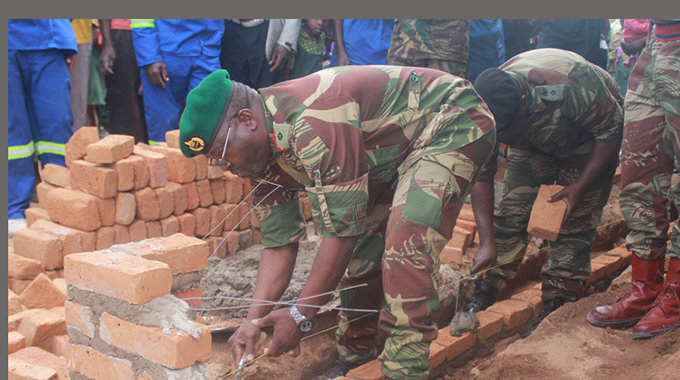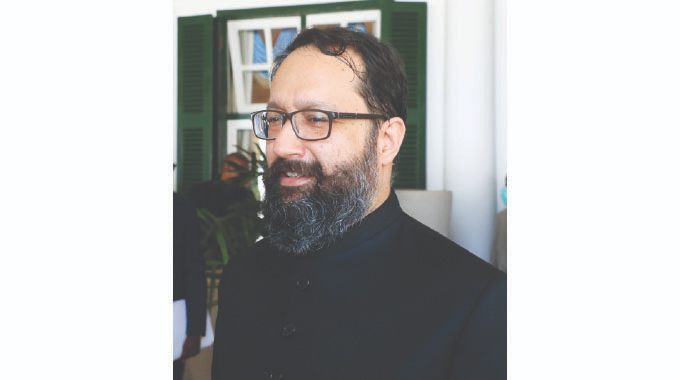EDITORIAL COMMENT: Defence Forces closely connected with the people

Defence Forces Day, today, comes straight after Heroes Day for several very good reasons: the bulk of the Defence Forces when they were formed after independence were veterans of the liberation armies, and to this day they are ready to risk their lives to defend Zimbabwe and the region, and to help those in severe distress.
Since the youngest war veteran must now be 60, since neither Zipra nor Zanla recruited child soldiers, the overwhelming majority of the Defence Forces of Zimbabwe must be younger men and women recruited and trained since independence, with a large block born since independence, and with the last of the liberation war veterans are fast approaching retirement age.
But that is not important. What is important is that those who fought for the liberation of Zimbabwe would have been able to pass on the spirit and ethos of what made them leave home and family and cross the border to learn how to fight, and then return to fight and in the end defeat the impressive military forces mobilised by the settler regime.
Of course the post-independence training extended considerably the military and technical skills required of modern national forces, able to fight in conventional war as well as opposing insurgency. But the spirit, that the people mattered and that the defence forces needed to be of the people, with the people and to defend the people, was maintained.
So in a real sense the defence forces have a history that goes back into the depths of the liberation forces, and that fairly small element of professionals from the old Rhodesian military, minus the wild boys and the vast number of conscripts, were able to fit in because they accepted this and because they recognised the military need for a people-orientated defence forces.
This close connection with the wider society and the continual stress on the need for popular support did not arise from politics. That was just the implementation factor. It actually arose from the military need for a military force to be connected to the people, and be with the people.
If the liberation forces during the liberation war had not had that popular support, had not been able to rely on the people, they would have been destroyed by the conventionally-armed opponents with their heavier weapons and air supremacy, that is if they had not been starved into submission. So from the very beginning of the post-independence period, that ethos of being with the people was stressed as both a military and a social imperative.
The growing professionalism and the growing skills and the widening of training were needed, but they needed to rest on the secure foundation brought into the free Zimbabwe that those who had won the freedom on the battlefield knew was the secret of their success, and the reason why they had been able to win. And they knew if ever that was forgotten, or minimised, the defence forces were not able to fulfil their mandate.
This is one reason why to this day military and air force units are spread across the country, so they are automatically living and working next to the people, rather than being inside the own little separate universe.
And it is one reason why there are the continuous and formal efforts to apply technical skills, and a modern defence forces needs a lot of soldiers and airmen who are exceptionally well trained in a wide swathe of technical skills, to upgrading local communities. Hence the schools and clinics and other things that have been built, and after more than 40 years these amount to a lot.
This is brought to a crescendo each year in the week before the Heroes and Defence Forces holiday weekend, when medical teams are deployed and other special efforts are made. Every member of the Zimbabwe National Army and the Air Force of Zimbabwe has been, at some stage, involved in a community project, as well as having civilian neighbours and friends.
This is one of the reasons why Zimbabwean contingents in United Nations and regional peacekeeping missions have been so successful. And why the more military external operations in the dying days of apartheid and the remnants of Cold War instability were also so successful.
Yes the Zimbabwean forces and contingents were well-trained and well led, but at the same time they deliberately established the closest possible relations with the communities they were protecting, because they knew that both professionalism and a supportive community were needed.
Inside Zimbabwe the defence forces are ready to assist in times of disaster and troubles. Just to take one example, when Cyclone Idai hit, an obvious source of assistance was the defence forces.
While air force helicopters flying rescue missions and getting essential personnel and the most critical supplies into the hammered area grabbed the attention of the cameras, we must not forget the army engineers applying their skills in opening blocked and destroyed roads and erecting emergency bridges and the army applying logistical skills in moving in the relief supplies and other necessities over a devastated landscape.
Even the 1980s Matabeleland troubles, caused largely by incomplete training worsened by a temporary detachment of some of those involved from the people, were a major lesson in how important both aspects were. When the defence forces rapidly upgraded professional training and went back to their roots and applied the ethos and lessons they had learned, they started getting on top of that group of bandits trained and backed by the dying apartheid regime.
The Defence Forces of Zimbabwe will see many more changes as time goes on and military threats change. We have heard how the Air Force of Zimbabwe sees itself as a small, highly efficient force able to maintain its aircraft and defend our air space and assist the civil authorities when needed in cyclones and the like. And the army almost certainly is continually planning how it will cope with regional and other changes.
But so long as that critical ethos, of being with and of the people, is maintained, then the rest is just applied professionalism and technical expertise. Those you can develop, apply and teach, but what must be there throughout is that reliance on the people and being with and for the people.








Comments